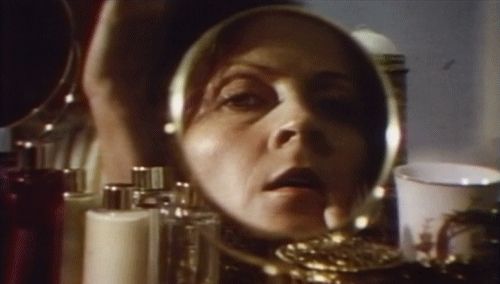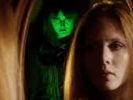Eye For Film >> Movies >> Season Of The Witch (1972) Film Review
Season Of The Witch
Reviewed by: Jennie Kermode

One of the things that always made George Romero's zombies so potent was the way the director paralleled their behaviour with the mechanical routines many people perform day to day in real life. Although ostensibly a very different film, Season Of The Witch also explores the horror of such routines, this time from a feminist perspective.
It opens with a surreal dream sequence which instantly arrests the attention. Jack (Bill Thunhurst) is walking through a park, drinking coffee, reading his morning paper. Behind him, apparently unnoticed, walks his wife (the film was originally called Jack's Wife). As she walks, branches he has carelessly shouldered aside whip back to hit her in the face. They get home, where she is collared and led into a cage. Cut to the house, where we see her friends chattering inanely around a table, see her teenage daughter ignoring her. In a mirror, she catches a glimpse of herself as an old woman. She begins to scream.

It's not clear how long Joan (Jan White) has been having these nightmares. Jack doesn't show her any concern or affection, just mutters vague complaints about the work he has to do. He's always out on business. She's always in the house, as if caged, with its terrifying Seventies wallpaper (all the scarier when one realises the film was shot in someone's actual home), with its cruel mirrors. Her daughter compliments her on her figure. Perhaps she's still an attractive woman, behind her terrifying Seventies make-up and studiously defensive posture. Her daughter's boyfriend (Romero regular Raymond Laine) seems to think so, alternately asserting and denying his interest in that obnoxious way that some young men do, making a hobby of humiliating those whose social status is beneath their own. But there's something more that boredom and lust inside Jean. There's a boiling anger, bolstered by deep existential dread.
White is formidable in the central role. She needs to be to compete with the outlandish sets and costumes, the frantic dialogue, and the perpetually dramatic style of Romero's camerawork. The viewer is never allowed to sit back, relax and simply follow the story - to do so would be to miss the point. Some viewers will find this exhausting and quickly lose patience. Others will be put off by the obnoxious characters, or distracted by the bizarre resemblance of Joan's friend Sylvia to Eric Idle. But there's a lot to appreciate in this bold, experimental piece of filmmaking.
Romero's insight into the pressures facing women in day to day life is remarkable. It's not the big political issues that matter here so much as the small, petty, cumulatively destructive acts through which Jean is belittled, put in her place or outright ignored. Does she become a witch, in the supernatural sense? That's hard to say. It doesn't altogether matter. Witchcraft is more important as a symbol of female power, a means through which Jean can strive toward her own identity. But it, too, ultimately comes with a collar and leash.
An intense sensory experience with a strong point to make, this ambitious film shows Romero's talent at its most acute. It's not at all what his fans will be familiar with, but it's an intriguing psychological drama.
Reviewed on: 28 Oct 2017
















